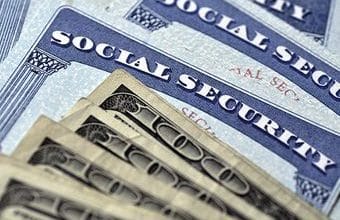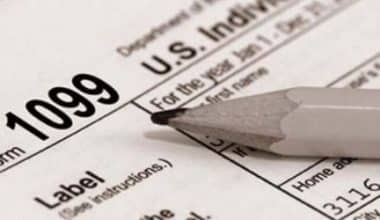Understanding the complexities of US sales tax is essential for making wise financial decisions as a responsible US consumer or business owner. You can precisely determine the amount of tax on purchases and guarantee compliance with tax laws by remaining informed about the sales tax rules in your region and using useful resources like a sales tax calculator. Join us as we investigate the world of US sales tax and arm you with the information you need to navigate the ever-changing world of taxation while making wise financial decisions. In this article, we will guide you through the intricacies of US sales tax, including the concept of sales tax-free states, the average US sales tax, the convenience of a US sales tax calculator, and the prevailing US sales tax rate. US sales tax can vary significantly from state to state, and some states even have no sales tax at all.
What is US Sales Tax?
The US sales tax is a consumption-based tax imposed on the sale of goods and certain services at the state and local levels. Each state determines its sales tax rate, and it varies widely across the country, typically ranging from 2% to 7% or more. Additionally, some local governments may impose their own sales taxes, further adding to the complexity of the tax system.
When purchasing goods or taxable services, consumers pay the applicable sales tax on top of the item’s price. However, not all states impose a sales tax. However, a few states, such as Alaska, Delaware, Montana, New Hampshire, and Oregon, do not have any state-level sales tax. Moreover, certain goods and services, such as groceries or prescription drugs, may be exempt from sales tax in some states. Businesses and consumers must understand the US sales tax system. Since it affects pricing, revenue collection, and state and local economic activity.
US Sales Tax-Free States
In the United States, the sales tax is a consumption-based tax levied on the purchase of goods and services at the point of sale. It is typically imposed by state and local governments and varies depending on the location and type of product or service. While most states have a sales tax, there are exceptions. Five states, namely Alaska, Delaware, Montana, New Hampshire, and Oregon, do not impose a state-level sales tax.
These states have no state income tax to attract customers and businesses and boost commerce and economic activity. Consumers can save money and businesses can avoid income tax collection and compliance. This unique feature can be particularly beneficial for large purchases, such as cars, electronics, and home appliances.
Despite not having a state income tax, these states may have local taxes or special fees. States without income tax may use income or property taxes to fund government services and infrastructure. Thus, while consumers in income tax-free jurisdictions pay less for some products, they still pay taxes to their state.
Read:NEW YORK SALES TAX: Tax Rate, Calculator & All You Should Know
Average US Sales Tax
The average US sales tax rate is approximately 7.25%. However, this rate can vary significantly depending on the state and local jurisdictions. States have the authority to set their own sales tax rates, which can range from as low as 2.9% in Colorado to as high as 9.45% in Tennessee. Local governments also have the power to impose additional sales taxes, further influencing the overall rate.
It’s crucial to be aware of the sales tax rate in your specific location, as it directly impacts the final cost of goods and services. Additionally, certain items may be exempt from sales tax in some states. This includes groceries or prescription drugs, while other states tax these items. Understanding the intricacies of sales tax regulations in your area can help you make informed purchasing decisions and budget accordingly.
US sales Tax Calculator
A sales tax calculator in the United States is a useful tool for calculating the income tax on a purchase. The calculator can rapidly determine the total cost. This includes tax, by inputting the purchase amount and the corresponding income tax rate. This enables consumers and organizations to correctly anticipate their spending and avoid surprises at the moment of sale. Many online merchants and financial websites provide free income tax calculators, making this tool easy to obtain and use. Because rates vary between states and local governments, it’s critical to utilize the exact income tax rate for your locality. income tax calculators ensure tax compliance, save time, and promote financial transparency.
US Sales Tax Rate
The sales tax rate in the United States varies by state and local authority. It might range from 0% in states where there is no sales tax to more than 10% in some towns and counties. The average total state and local sales tax rate in the United States is roughly 7%, however, it can be higher or lower depending on where you buy. It is critical to understand the sales tax rate in your area in order to precisely determine the total cost of a product and avoid surprises at the checkout. Additionally, depending on the state’s tax regulations, some items, such as food or prescription drugs, may be exempt from deals tax. To guarantee that you are applying the correct rate, always consult with local tax authorities. You can also utilize a tax calculator.
Read: INCOME TAX-FREE STATES: Top States in the World & Us
How Much is the US Sales Tax?
The sales tax in the United States varies by state and locality, with rates ranging from 0% to over 10%. The average state and local combined income tax rate is approximately 7 percent. However, it is essential to verify the local tax rate, as it can affect the total price of your purchases. Depending on the state’s tax laws, certain items, such as foodstuffs and prescription drugs, may be exempt from income tax. Use a income tax calculator or local tax authorities for accurate income tax calculations.
What States Have a 7% Sales Tax?
Some states have a 7% sales tax rate in the US. This includes Indiana, Mississippi, New Jersey, Rhode Island, and Tennessee. However, it’s essential to note that an exchange’s tax rates can vary within each state, with some local jurisdictions having different rates. Before making any purchases, it’s advisable to check the specific deals’ tax rates in your location to ensure accurate calculations. Additionally, certain items may be exempt from this tax. So it’s essential to be aware of the state’s tax laws when determining the final cost of your purchases. Consulting local tax authorities or using an exchanges tax calculator can provide precise information about the applicable tax rate in your area.
Is US Sales Tax Like VAT?
No, US sales tax and VAT (Value Added Tax) are different systems. In the US, income tax is imposed at the point of sales. VAT is a consumption tax collected at each stage of production. The US income tax is only levied on the final retail income tax to consumers, while VAT is applied throughout the supply chain, from raw materials to the end product. Additionally, the rates and rules for income taxficantly between countries. Many countries utilize VAT for revenue, whereas the US uses income tax. Overall, while both systems are forms of consumption tax, they operate differently and have distinct implications for businesses and consumers.
Also read: NEW YORK SALES TAX: Tax Rate, Calculator & All You Should Know
What is VAT in the USA?
VAT (Value-Added Tax) is not the predominant form of consumption tax in the United States. Instead, the country relies on an exchanges tax levied by state and local governments. In many other nations, value-added tax (VAT) is commonly used, but in the United States, an exchanges tax is the predominant method of gathering consumption taxes. an income tax rates and regulations differ by state and locality, and they are typically added to the price of consumer goods and services at the point of income tax. In contrast to value-added tax, which is collected at every stage of production, an exchanges tax is only applied to the final retail transaction to the final consumer.
How Much is Tax in Texas?
In Texas, the an exchanges tax rate is determined by combining the state’s an exchanges tax rate of 6.25% with any applicable local taxes imposed by cities, counties, or special taxing districts. Local jurisdictions have the authority to levy additional taxes, which can result in varying tax rates across the state. The maximum total income tax rate in Texas is 8.25%—this includes the state an exchanges tax rate plus any additional local taxes.
The variation in income tax rates is an important consideration for businesses and consumers in Texas. To accurately compute the total tax, you must know the tax rates in each city or county. This information is particularly vital for businesses conducting sales or individuals making purchases across different jurisdictions in the state. Understanding and staying up-to-date with the local tax rates can help ensure compliance with tax regulations and avoid potential issues with underpayment or overpayment of an exchanges tax in Texas.
Who Has the Highest Sales Tax?
The states with the highest combined state and local income tax rates in the country are Tennessee and Louisiana, both at 9.55%. Due to the greater taxes, these states place on products and services. It is crucial for both consumers and businesses to take tax consequences into account before making purchases or completing transactions. The locality-specific income tax rates in these states might change, which additionally affects the overall tax burden for citizens and businesses. People and businesses must know each state’s tax rules and rates to budget and pay taxes.
How Much is Tax in California?
The statewide income tax in California is 7.25%. The majority of products and services bought within the state are subject to this tariff. It’s crucial to remember that local governments in California have the authority to impose additional taxes as well. Depending on the region, this might lead to differing total tax rates. County, city, and district taxes, which can range from 0.10% to 2.00% or more, maybe one of these extra taxes.
Due to the combination of the state rate and municipal taxes, the total an exchanges tax rate, for instance, in Los Angeles County, can reach a maximum of 10.25%. On the other hand, the overall exchange tax rate may be lower in some cities or districts with fewer extra taxes. The final price of goods and services for consumers may be affected by this variation in an exchanges tax rates between different geographic areas.
Businesses and consumers in California must know the local exchange tax rate for proper pricing and tax compliance. Since municipal regulations might change California exchanges tax rates, it’s best to stay informed.
FAQs
Who pays sales tax in the United States?
Purchasers must pay income tax unless they furnish the vendor with proof that the purchase is tax-free (an exemption certificate). The certificate must be on a state-approved form. The usage of the Multistate Tax Commission’s Uniform income tax and Usage Tax Certificate has been approved by 38 states.
Is there VAT in Canada?
VAT, or Value Added Tax, is a sort of tax levied in many nations on products and services. The Goods and Services Tax (GST) is Canada’s federal counterpart of VAT. Furthermore, most provinces have a provincial version of VAT known as PST or QST.
How much is Texas sales tax?
The state income tax and use tax rate in Texas is 6.25 percent. But local taxing jurisdictions may also levy a income tax and use tax of up to 2 percent, for a total combined rate of 8.25 percent.
Related Articles
- BEST BUSINESS CREDIT CARDS 2023
- MINIMUM WAGE SALARY: All You Need to Know
- TOP CAR INSURANCE: BEST 2023 INSURANCE COMPANIES
- Double Entry Bookkeeping: Simplified With UK Practices and Examples
- GOING CONCERN: Meaning, Concept, Transfer, & All You Need






